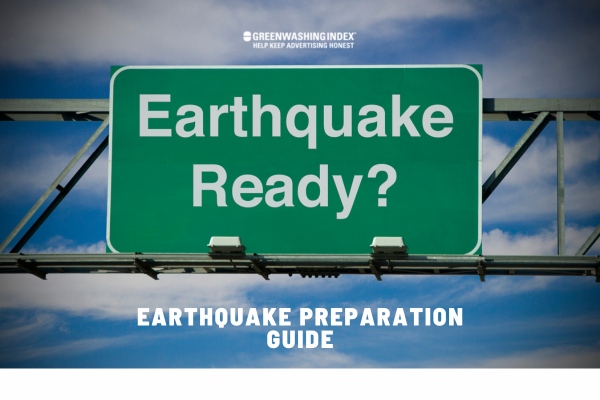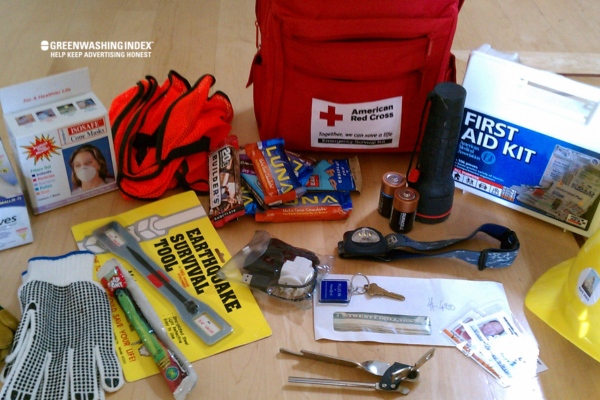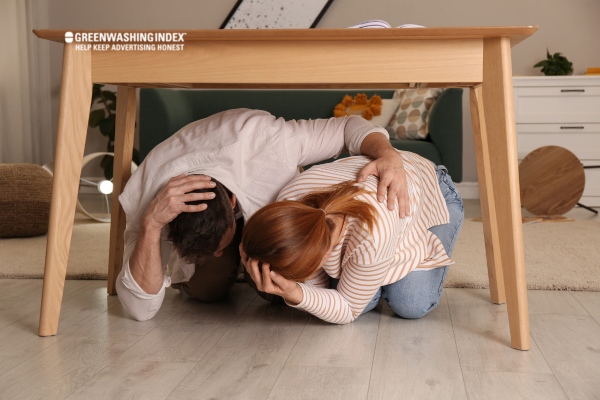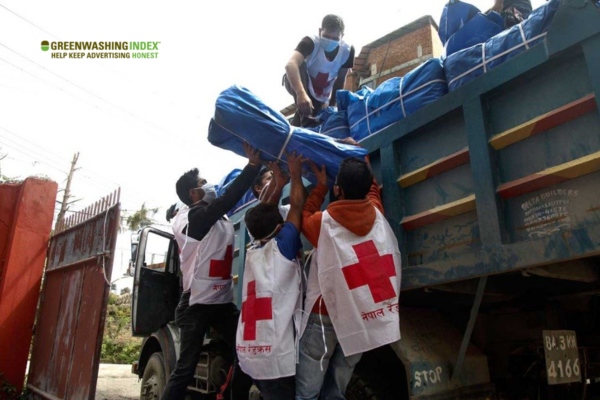When the ground shakes, your heart races – it’s the fear of the unexpected that can grip anyone during an earthquake. Earthquake preparation might just mean the difference between being scared and being safe. But how well-equipped are you to face such a seismic event? I’ve got some insights that could save lives, including yours.
The best strategy for an earthquake is to stay prepared before it hits. That means knowing safety measures to reduce risks and having a plan in place for when the tremors start. You must secure your home, assemble an emergency kit with all necessary items, understand where to take cover during the earthquake, and have steps ready for action after it stops.
Here’s What You Will Discover:
- Step-by-step guidance on earthquake readiness
- Easy-to-follow strategies for family safety
- Simple ways to secure your house from quake damage
- Essentials every emergency kit should contain
- Key actions for staying safe when an earthquake occurs
Understanding The Risk in Your Area
When we talk about earthquake preparation, the first step is always to understand the risk in your area. Not every place is the same when it comes to earthquakes. Some places have them often, while others might rarely feel them.
Facing the Facts – Earthquake Zones and Their Impact
When I think about earthquakes, the first thing that comes to my mind is where they might happen. It’s important for me and you to know if we live in a place where earthquakes are common. Knowing this can save lives.
- Check a map: Find an earthquake risk map online or at your local library. These maps show where earthquakes may strike.
- Listen to experts: Pay attention to what scientists and local authorities say about your area’s earthquake risk.
- Look around you: If there are stories of old earthquakes or if buildings around you have been made stronger to stand against earthquakes, that’s a sign that you’re in a risk zone.
If we find out that we live in an earthquake zone, it means we should be serious about earthquake preparation.
Here’s why being prepared matters so much:
- Safety for everyone: When an earthquake hits, things can get very bad quickly. If we’ve made a plan and know what to do, it can keep us safe.
- Less damage: Earthquake preparation can also make sure our homes suffer less harm.
- Quick recovery: Being ready means it might be easier for us to get back on our feet after the quake.
So, recognizing high-risk areas isn’t just something nice to know—it is crucial for keeping ourselves and our loved ones safe during these scary times called earthquakes.
Remember, knowledge is power when it comes down to our safety during an earthquake!
Developing An Earthquake Preparation Plan
When I think about earthquake preparation, one of the first things that comes to mind is creating a solid plan. This means sitting down with my family and really thinking about what we would do if an earthquake hit. I know it can be scary to think about, but being prepared can make a huge difference.
Crafting a Family Emergency Plan
Creating an emergency strategy for my family is crucial, so here’s what I do:
- Gather everyone together: I call a family meeting to make sure everyone knows we’re working on our safety during an earthquake.
- Discussing the risks: We talk about what could happen during a seismic event and why it’s important to be ready.
- Choose safe spots: We walk through our home and pick out safe places like under sturdy tables or against inside walls.
- Plan evacuation routes: We check all the exits in our home and decide on the best escape routes.
- Establish a meeting point: We pick a spot outside our home where we will meet if we get separated during the quake.
- Out-of-area contact person: It’s smart to have one person who lives far away that all family members agree to contact to say they are safe.
- Prepare an “In Case of Emergency” (ICE) list: This includes important phone numbers and medical information for each family member.
- Practice your plan: Every now and then, we practice our plan so it feels more natural if we ever need to do it for real.
Creating this emergency strategy feels like putting together pieces of a puzzle where each piece supports our overall safety during an earthquake.
Strengthening Your Home Infrastructure
To protect my house from damage during earthquakes, these are some steps I take:
- Secure heavy furniture: Tall shelves or dressers can fall over easily in an earthquake, so I attach them firmly to walls using brackets or straps.
- Brace overhead light fixtures: Making sure ceiling lights or fans won’t come loose by strengthening their attachments keeps us safer when the ground shakes.
- Place breakables in low or closed cabinets: Glasses or plates might fly out of cupboards during violent shaking; keeping them low or behind latches lessens this risk.
- Check water heater installation: A water heater might topple over if not secured properly; strapping it tightly against wall studs helps prevent this potentially dangerous situation.
- Stick-down electronics and appliances: Attach TVs, computers, microwaves – anything heavy that could move – with special hook-and-loop fasteners (like Velcro) designed for this purpose.
- Retrofit older buildings: Older homes might benefit from modern upgrades like bolting foundations more securely — something professional help may be needed for.
- Inspect roof tiles or shingles: Making sure these are secure can prevent lots of damage from falling debris caused by strong quakes.
Taking these proactive measures makes my house more resilient in case of seismic activity, greatly contributing to my peace of mind regarding safety during earthquakes.
Being aware that disasters can strike at times has shown me how valuable disaster readiness is. Crafting detailed plans not only brings families together under common goals but also reinforces homes and significantly minimizes potential damages!
Hence, my approach towards earthquake preparation focuses heavily on familiarization with survival tips through constant review and improvement upon existing emergency planning for earthquakes at both personal and residential levels—that’s how I ensure both comprehensive understanding as well as effective application of earthquake safety measures before any actual seismic event preparedness scenario arises!
Assembling Your Earthquake Emergency Kit
When I think about earthquake preparation, the first thing that comes to mind is the earthquake emergency kit. An emergency kit is a bag full of items that will help me and my family stay safe if an earthquake happens. It’s like a toolbox for surviving after everything shakes.
Essentials for Surviving After a Quake
What items to include in your emergency kit tailored for earthquake survival needs:
It’s important to pack things that meet basic needs, like food, water, and staying warm and safe. Here’s what I always include in my kit:
- Water: Each person needs one gallon of water per day, so I plan for at least three days. Water is super important because it keeps us hydrated and helps if we get injured.
- Food: I pack non-perishable food items – stuff that won’t spoil without a fridge – things like canned beans, dry fruits, and energy bars.
- First Aid Kit: If someone gets hurt, this can be a real lifesaver! It should have bandages, antiseptic wipes, adhesive tape, scissors, and any personal medicine someone might need.
- Flashlight and Extra Batteries: Electricity may go out during an earthquake, so having light will guide us safely around our home or outside.
- Whistle: If getting trapped somewhere due to an earthquake collapse happens, by blowing the whistle, I can let rescue teams know where we are without shouting all the time.
- Dust Masks: There can be lots of dust in the air after stuff falls down from buildings or walls crack open – wearing a mask helps protect our lungs from breathing it in.
- Plastic Sheeting & Duct Tape: If windows break or doors won’t close because of damage, using plastic sheets plus duct tape helps keep the weather out or even create a simple shelter.
- A complete change of clothes, including sturdy shoes: Being ready means having clothes suited for earthquakes — they should keep you warm enough at night but not too hot during daytime hours either; sturdy shoes are especially key in case broken glass or debris needs navigating through.
- Extra blankets/sleeping bags: Nights can get cold after an event like this, so blankets or sleeping bags make sure everyone stays warm enough until help arrives or it’s safe again!
- A multi-tool: This is sort of like many tools in one — it could have pliers and a knife edge—good for lots of different tasks that might come up unexpectedly.
- Copy of important documents & cash: Since ATMs might not work right away (or banks), having cash on hand could be really useful, copying documents to prove who you are, which gets more necessary when usual ways don’t function anymore such as if cell service goes down).
- A portable charger: Keeping phones charged often becomes difficult when the power goes out, so having an extra battery source handy makes contacting others much easier during emergencies!
These items form my base earthquake survival tip list whenever thinking about safety during earthquakes now remember there may be specific stuff only YOU need depending on personal situations as well. Make sure those get included too!
Protecting Yourself During the Shaking
When an earthquake starts, it can be pretty scary. Here’s what I do to stay safe if I’m indoors:
Inside Safety Procedures
Do’s:
- Drop: Sit right down on the ground before the quake knocks you over.
- Cover: Find a sturdy table or desk and get under it to protect yourself from falling stuff. If there’s no table or desk near you, cover your face and head with your arms.
- Hold On: If you’re under a piece of furniture, hang on tight until everything stops shaking.
- Stay away from windows – they can break and hurt you.
- Keep inside. Stay where you are until all shaking stops.
- Use text messages or social media to tell people you’re safe so phone lines stay open for emergencies.
Don’ts:
- Don’t stand in doorways. I learned this isn’t safe anymore because doors can swing and hurt you, or the frame might not be strong enough to protect you.
- Don’t use elevators. They could stop working when there’s shaking.
- Keep away from bookcases, mirrors, and heavy furniture that could fall on top of you.
Outside Survival Tactics
If the Earth starts shaking and I’m outside, here’s what goes through my mind:
Do’s:
- Find an open space quickly – Move away from buildings, trees, streetlights, and utility wires.
- Once in a clear spot – Stay there till the shaking is over.
Don’ts:
- Do not run into buildings – They might be dropping things like glass or other stuff that could injure me!
I remember these safety tips during earthquakes to make sure I’m doing my best at earthquake preparation. It means having an action plan even before anything happens so when an earthquake strikes; safety during that critical time is second nature for me!
Post-Earthquake Recovery Steps
After a big shake from an earthquake, it’s important we get back on our feet. The ground has stopped moving, but there’s still lots to do. Here’s my step-by-step plan:
Assessing Damage and Prioritizing Actions
Once the earth stops shaking, I know I need to act fast but stay calm.
- First, I check if everyone around me is okay; safety comes first. If someone needs help, I try to give it.
- Next, I look around carefully. Checking the place where I am – could anything fall or is something like glass broken? Being aware helps me not get hurt.
- Then, it’s time to sniff the air. Why? Because broken gas pipes smell bad and can be dangerous. If I smell something funny or hear hissing sounds, getting out is a must.
- I also look for water leaks; water can ruin things fast and make floors slippery.
- Lastly, will the building stand strong? If things seem off – maybe doors won’t shut right or floors are now bumpy – getting outside is best.
The idea here is simple: stay safe, check for signs of trouble, and deal with them quickly.
Making Your Health & Wellbeing a Priority
After an earthquake, taking care of myself is just as big a deal as fixing up my house.
- Get Better Physically: Cuts or bruises might come from all the shaking around stuff in the house. I cleaned my wounds well so infection wouldn’t become another problem for me to handle.
- Earthquakes rattle my nerves, too:
- Take deep breaths if feeling scared: in through my nose, out through my mouth.
- Drink lots of water; staying hydrated helps with stress.
- Eat healthy snacks like fruits or nuts if I have them; food gives energy, which helps keep stress down.
- Talk about what happened with friends or family: It’s normal to feel shaken after such a scare – pun intended! Chatting makes burdens lighter because shared worries are halved worries.
- Get some shut-eye: Rest helps heal both body and mind after rough times like earthquakes.
- Keep routines going: Sticking with usual habits can help things feel more normal again after everything gets all mixed up by an earthquake.
Remembering these points will help me bounce back physically and mentally from an earthquake’s punches so that, before long, everything feels alright again.
Using these simple lists keeps me focused on what’s important: keeping safe during clean-up and taking care of myself so that tomorrow’s sun shines brighter than today’s dark clouds left behind by the quake!
FAQs
Do I need special insurance coverage for earthquakes?
Yes, you often do. Regular home insurance does not cover damage from earthquakes, so getting a specific policy is a smart part of earthquake preparation.
How will I know if my structure is safe after experiencing tremors?
After tremors, check for clear signs of damage, like cracks in walls or an uneven foundation. For safety, get a professional to inspect your house and confirm it’s secure.
What actions should I take immediately after an earthquake?
Right after an earthquake, ensure you’re safe: check yourself for injuries and get to a secure area. Then, follow your emergency plan and listen to local news for safety instructions.
Conclusion
As I wrap up, I want to remind you that staying safe during an earthquake is about being ready before it happens. By understanding the risks, preparing your home and family, having an emergency kit on hand, and knowing what to do when the ground shakes, you are arming yourself with knowledge. Remember, the shaking will stop but your actions before, during, and after can make all the difference. Stay calm and be proactive in earthquake preparation efforts—it could save your life.
Key Takeaway Points
- Know if you live in a high-risk earthquake zone.
- Create a detailed emergency plan for your family.
- Retrofit your house and secure heavy items.
- Keep an earthquake survival kit ready.
- Follow safe procedures during an earthquake such as “Drop, Cover, Hold On.”
- Prioritize health and well-being after the quake.







